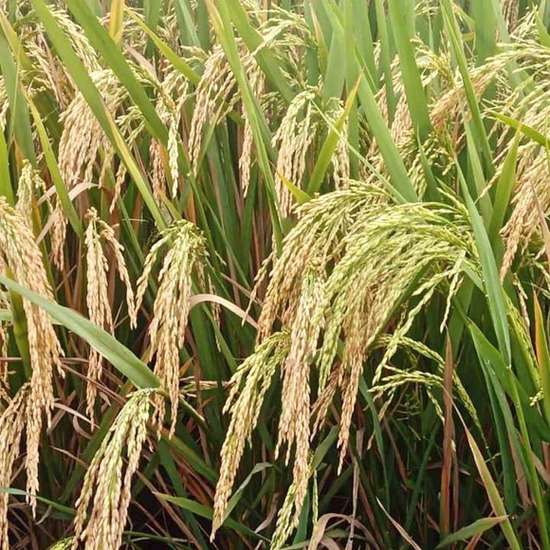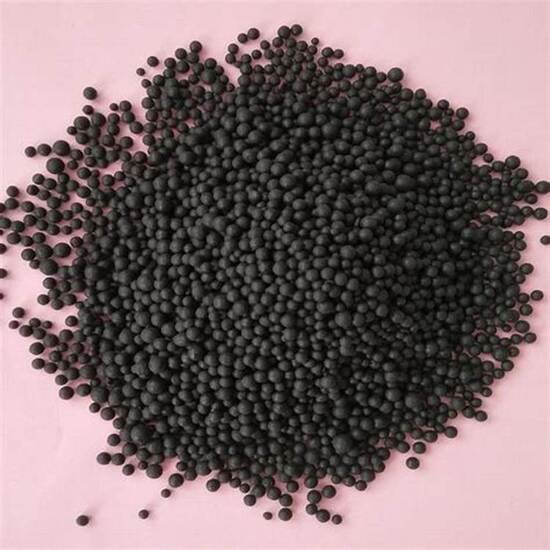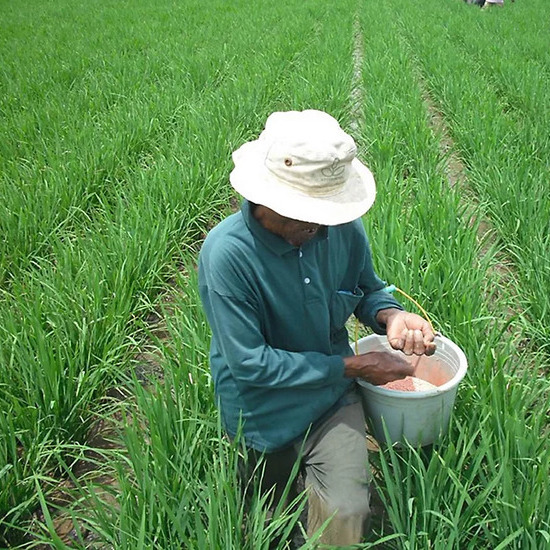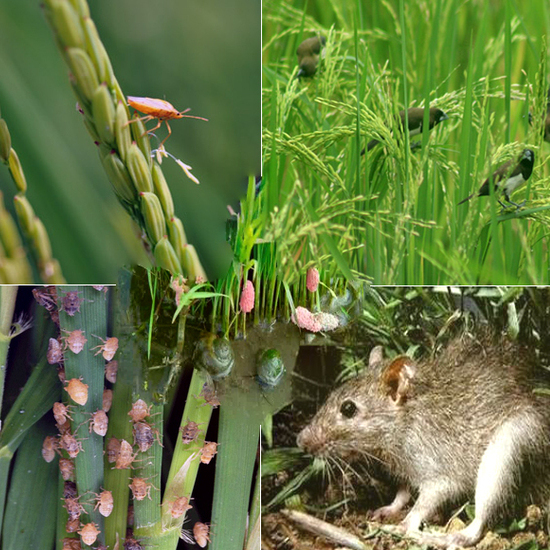Tungro Control Strategy in Rice Plants for Sustainable Agriculture
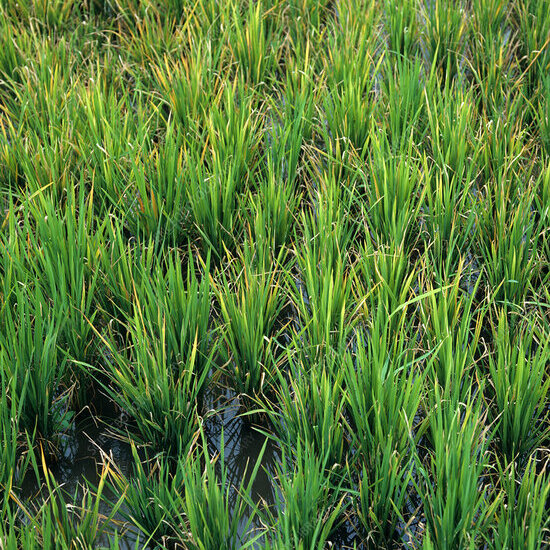
Sustainable agriculture is the key to maintaining a balanced and productive agricultural ecosystem. One of the main threats to rice plants in Indonesia is tungro disease, which is caused by infection of two types of viruses, namely Rice tungro bacilliform virus (RTBV) and Rice tungro spherical virus (RTSV), which are transmitted by green leafhoppers (Nephotettix virescens) semi-persistently. This disease not only reduces productivity but also affects the quality of the harvest.
In facing this challenge, an agroecological approach is essential. Agroecology emphasizes the importance of maintaining the balance of nature in crop production, relying on natural enemies, and maintaining biodiversity in agricultural ecosystems. PT Matari Agro Indonesia is committed to supporting farmers in implementing sustainable and environmentally friendly agricultural practices. Through agricultural consulting services and training centers, we introduce the concept of agroecology and educate farmers about the importance of maintaining a healthy and productive agricultural ecosystem.
Plant Pest Organisms (OPT) in Rice Plants
Tungro disease causes rice plants to experience symptoms of stunting, yellowing to orange leaves, reduced tillers, few or no panicles formed, sterile grains, and stunted roots. Physiologically, infected rice plants experience decreased chlorophyll and hormones, decreased photosynthesis rates, increased respiration rates, and increased oxidase enzymes.
Tungro disease is one of the most detrimental diseases to rice plants, causing various significant symptoms and threatening productivity. The most striking symptom of tungro infection is stunted plant growth, which is evident from the stunted condition of the plant. The leaves of infected plants also show dramatic color changes, ranging from yellowing to orange, starting from the tips of young leaves. This not only affects the appearance of the plant but also indicates serious damage to the physiological processes within it.
In addition, tungro infection causes a decrease in the number of rice tillers, meaning fewer shoots grow from each plant. This reduces plant density in the field, which in turn reduces overall yields. Panicles, or clusters of rice flowers that produce grain, are also severely affected. In tungro-infected plants, the number of panicles formed is very small or even none at all. Even when panicles are formed, the resulting grain is often sterile, unable to develop into mature, harvestable rice grains.
Physiologically, rice plants infected with tungro undergo several detrimental changes. One of the main impacts is a decrease in the level of chlorophyll in the leaves. Chlorophyll is an important pigment that allows plants to carry out photosynthesis, the process by which plants convert sunlight into energy. As chlorophyll levels decrease, the plant’s ability to photosynthesize also decreases, reducing the amount of energy available for plant growth and development.
Tungro infection also affects hormone levels in plants. Plant hormones, such as auxins and cytokinins, play a key role in a variety of growth and development processes. An imbalance of these hormones can lead to a variety of growth problems, including stunted root growth. Healthy, strong roots are essential for the uptake of water and nutrients from the soil, and stunted roots can worsen conditions in plants already stressed by viral infections.
The decreased photosynthesis rate due to decreased chlorophyll is also accompanied by an increased respiration rate. Respiration is the process by which plants break down sugars to produce energy. However, increased respiration rates under stressful conditions such as viral infections often mean that plants are using energy faster than they can be produced through photosynthesis. This leads to an energy deficit that further impairs plant health.
In addition, tungro infection also causes increased activity of oxidase enzymes. These enzymes play a role in a variety of oxidative processes in plants, including the response to stress. Increased oxidase activity often indicates that the plant is fighting off an infection, but in many cases, it also means that the plant is experiencing oxidative damage that can damage plant cells and disrupt their normal function.
Overall, the impact of tungro infection on rice plants is extensive and detrimental. From visible physical symptoms to physiological changes within the plant, the disease significantly reduces productivity and crop quality. Therefore, controlling tungro disease is a top priority in efforts to maintain the sustainability and productivity of rice farming in Indonesia.
Tungro Virus Transmission
Tungro virus transmission occurs when green leafhoppers as vectors suck infected plants and then suck healthy plants. The vector takes 15-30 minutes to acquire the virus and transmits it within 10-30 minutes. The incubation period in plants ranges from 1-3 weeks. Green leafhoppers can transmit both viruses simultaneously from an inoculum source containing both types of viruses, with RTSV as the helper virus and RTBV as the dependent virus.
Tungro Symptoms Complexity
Tungro symptoms are influenced by the level of resistance of the variety, the age of the plant when the infection occurs, and the type of virus that infects. Symptoms usually begin to appear in plants aged 10-15 days after inoculation and in the plantation symptoms appear 21-30 days after planting. Tungro explosions generally occur from sources of infection that develop in non-simultaneous plantations.
Tungro Control Strategy
Integrated tungro control aims to prevent plantations from tungro disease with several strategies:
-
Right Planting Time: Planting rice before the green leafhopper population is high so that when the leafhopper population is high, the plantation has entered the generative phase, reducing the pressure of tungro virus infection.
-
Use of Resistant Varieties: Experience has shown that planting green leafhopper-resistant varieties is effective in reducing the intensity of tungro disease. However, resistant varieties should not be planted continuously to avoid increasing vector selection pressure that can cause the development of new green leafhopper biotypes.
-
Variety Rotation: Variety rotation with asynchronous planting patterns (rice-rice-rice) can extend the duration of variety resistance and reduce green leafhopper selection pressure. There are four groups in variety rotation, namely T0 (without resistant genes), T1 (Glh1), T2 (Glh6), T3 (Glh5), and T4 (Glh4).
-
Technical Culture: Nursery management, planting methods, spacing using 4:1 legowo rows, direct eradication, not excessive nitrogen fertilization, water availability management, and wise use of insecticides.
On-Farm Management for Stable Rice Supply
PT Matari Agro Indonesia also emphasizes the importance of good on-farm management to ensure stable rice supply as a raw material for the rice industry. By implementing a modern agribusiness rice field management strategy, including controlling 60 hectares of land plus 100 hectares of farmer partners, production capacity can be increased to 2 tons per hour with a duration of 8 hours per day for 26 working days per month.
Controlling tungro disease through an agroecological approach and using the right strategy is an important step in maintaining rice farming productivity in Indonesia. PT Matari Agro Indonesia is ready to support farmers in implementing sustainable agricultural practices and increasing productivity sustainably. Through our agricultural consulting services and training centers, we are committed to introducing the concept of agroecology and helping farmers overcome challenges in rice farming.
Matari Agro Indonesia is one of the most affordable and farmer-friendly agricultural consulting companies in Indonesia. We provide top-class agricultural consulting services across the country with the help of a diverse team of scientists, operational experts, and technology. If you are looking for a better return on investment for your agricultural investment, contact the Matari Agro Indonesia team today!
